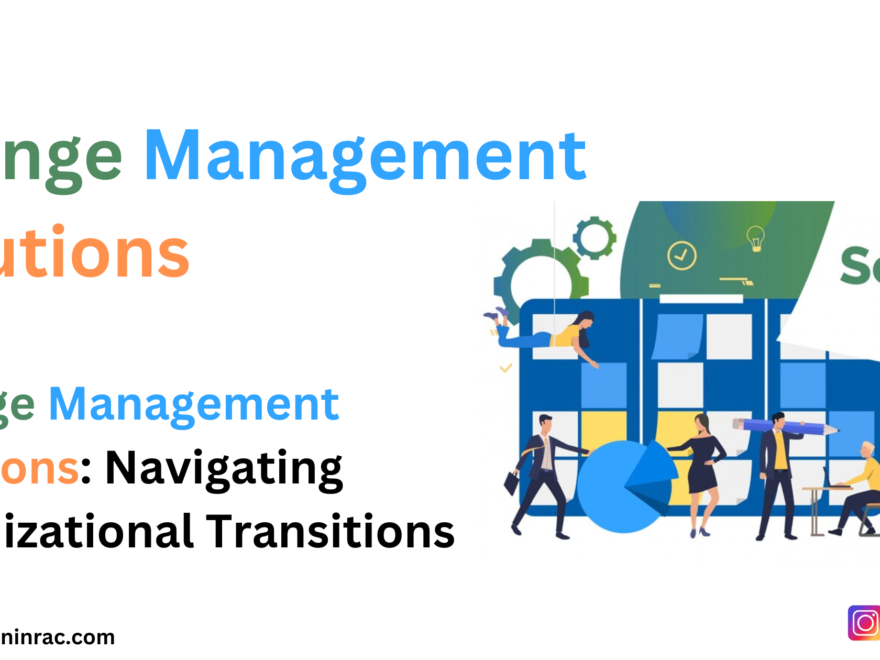In today’s rapidly evolving business landscape, change is inevitable. Whether it’s adapting to new technologies, shifting market demands, or internal restructuring, organizations must effectively manage change to thrive. This blog explores the importance of change management solutions and offers insights into navigating organizational transitions successfully.
Understanding Change Management
Change management is the process of planning, implementing, and controlling changes within an organization. It involves managing the people side of change to ensure smooth transitions and minimize resistance. Effective change management solutions encompass a range of strategies and techniques to facilitate organizational change while mitigating risks.
The Need for Change Management Solutions
Change can be disruptive, causing uncertainty and resistance among employees. Without proper management, change initiatives may fail to achieve their intended goals, resulting in wasted resources and lost opportunities. Change management solutions are essential for addressing these challenges and guiding organizations through periods of transition.
Key Components of Change Management Solutions
Leadership Engagement: Strong leadership is critical for driving change. Leaders must communicate the vision for change, provide support to employees, and lead by example. Their active involvement demonstrates commitment and fosters trust among stakeholders.
Stakeholder Engagement: Engaging stakeholders throughout the change process is vital for gaining buy-in and addressing concerns. By involving employees, customers, and other key stakeholders, organizations can leverage their insights and expertise to inform change initiatives.
Communication Strategies: Effective communication is key to managing change successfully. Organizations should develop clear and consistent messaging to keep stakeholders informed and engaged. Communication channels should be tailored to the needs of different audiences and allow for feedback and dialogue.
Change Readiness Assessment: Before implementing change, organizations should assess their readiness and capacity for change. This involves evaluating factors such as organizational culture, resources, and existing capabilities. By identifying potential barriers and gaps, organizations can better plan for successful change implementation.
Training and Development: Providing employees with the necessary skills and knowledge to adapt to change is essential for success. Training programs should be designed to support employees throughout the transition process, equipping them with the tools they need to thrive in the new environment.
Change Implementation Plan: A well-defined implementation plan outlines the steps and milestones for executing change initiatives. It includes timelines, responsibilities, and contingency plans to ensure smooth execution and minimize disruption to operations.
Monitoring and Evaluation: Continuous monitoring and evaluation are essential for tracking progress and identifying areas for improvement. Organizations should establish metrics and benchmarks to measure the effectiveness of change management solutions and make adjustments as needed.
Benefits of Effective Change Management
Increased Employee Morale and Engagement: Well-managed change initiatives can boost employee morale and engagement by fostering a sense of purpose and involvement in the organization’s future.
Enhanced Organizational Agility: Organizations that effectively manage change are better equipped to adapt to evolving market conditions and seize new opportunities.
Improved Performance and Productivity: Change management solutions can drive improvements in performance and productivity by aligning processes, systems, and resources with strategic objectives.
Reduced Resistance and Risk: By addressing concerns and involving stakeholders early in the change process, organizations can minimize resistance and mitigate risks associated with change initiatives.
Sustainable Growth and Innovation: Change management solutions enable organizations to embrace innovation and pursue sustainable growth by fostering a culture of continuous improvement and learning.
Conclusion
Change is a constant in today’s business world, and organizations must be prepared to navigate transitions effectively. By implementing robust change management solutions, organizations can mitigate risks, engage stakeholders, and drive successful outcomes. Embracing change as an opportunity for growth and innovation, organizations can position themselves for long-term success in an increasingly dynamic environment.

